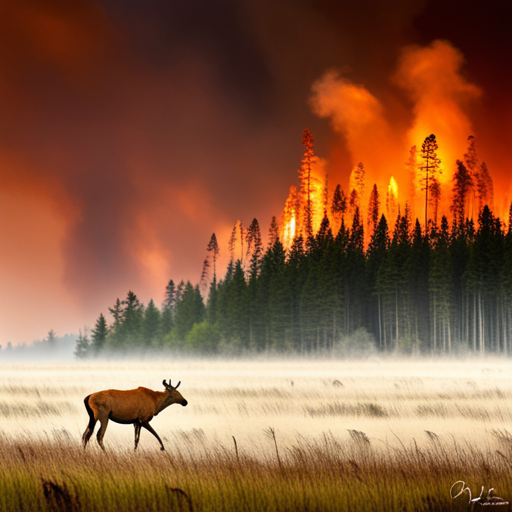What Impact is Climate Change Having on Local Wildlife?
Article Source: The Effects of Climate Change on Fire Regimes and Vegetation

Why You Should Care
Climate change is not just about hotter days; it's changing our forests and wildlife too. Wildfires are becoming more frequent and intense, and this is bad news for the animals that live in these forests. Understanding these changes can help us protect these ecosystems and the creatures that depend on them.
Answering the Question… What Impact is Climate Change Having on Local Wildlife?
Climate change is increasing wildfires, which are destroying habitats and forcing animals to leave. In the Pacific Northwest, large fires have doubled in frequency, causing significant loss of fire-resistant trees and disrupting local wildlife. This change is making it harder for animals to find safe, suitable habitats.
How Was the Study Done?
Researchers examined wildfire history and forest changes in the Pacific Northwest, using decades of data and climate models to understand how warmer, drier conditions are affecting fire activity and wildlife.
What Was Discovered?
- Increased Fire Frequency: Large wildfires have become significantly more common, with some areas experiencing a doubling in fire occurrences over the past few decades. This increase is particularly evident in regions like the Pacific Northwest, where warmer temperatures and reduced precipitation have created drier conditions, making forests more susceptible to fires.
- Habitat Loss: The rise in wildfires is leading to substantial habitat destruction. Animals that rely on large, old-growth trees are particularly affected, as these trees are being lost at an alarming rate. The destruction of these habitats forces many species to either migrate to new areas or face population declines, disrupting local ecosystems.
- Forest Structure Changes: The repeated burning of forests is altering their structure, with a noticeable loss of large, fire-resistant trees. These changes are leading to denser forests with more undergrowth, which are more prone to high-severity fires. This alteration in forest structure reduces the availability of suitable habitats for many species, further threatening biodiversity.
- Climate Stress: Warmer and drier conditions are not only making forests more flammable but also creating a more stressful environment for wildlife. The increased frequency and severity of fires add to the stress on species already struggling with changing climate conditions, leading to reduced survival rates and altered behaviors in affected populations.
- Ecosystem Disruption: The cumulative effect of increased fire frequency, habitat loss, and changes in forest structure is a significant disruption of entire ecosystems. This disruption affects not only individual species but also the intricate relationships between plants, animals, and their environments, leading to a decline in overall ecosystem health and resilience.
Why Does It Matter?
The rise in wildfires due to climate change poses a serious threat to wildlife and their habitats. Understanding these effects is crucial for developing better forest management and conservation strategies to protect vulnerable species. These findings highlight the urgent need for proactive measures to mitigate the impact of climate change on our forests and the wildlife that depend on them.
Link to full article: The Effects of Climate Change on Fire Regimes and Vegetation
